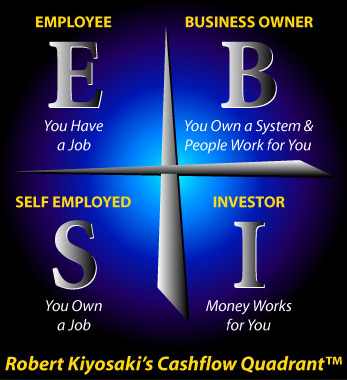
Since a major audience for this blog consists of entrepreneurs with side hustles, it’s no surprise that I frequently need to explain that side hustles are not just fun hobbies or part-time jobs. I actually think there are four main types of side hustles, each with eight distinct traits. In this post, I aim to clarify what a side hustle is and what it isn’t.
When many people think about a side hustle, they naively think that it’s just like a part-time job. However, that characterization is a rather incomplete definition.
By definition:
“A side hustle represents any activity undertaken to create supplemental income that is in addition to one’s full-time job. “
However, describing a side hustle as a part-time job is not accurate. The main difference between a side hustle and a part-time job lies in who makes the choices and is responsible. The table below outlines some key differences between a part-time job and a side hustle.
With a side hustle, you work for yourself and not an employer. How much you earn from your efforts is based on how much you charge. You have to track and make estimated quarterly income tax payments on any money you earn. Having a side hustle gives you the freedom to decide how much time and energy you want to devote to your side hustle work. With a part-time job, your employer makes all these decisions.
Another defining characteristic of a side hustle is a delay in your cash flow.
Delay In Cash Flow
Hourly Labor: Some side hustles trade time for money. After a specific period of time- generally a week or a monthly- you submit an invoice with the number of hours worked to the customer. The customer places your invoice in their Accounts Payable (A/P) queue, and after 30 days or more, you receive a check. Of course, freelancer sites such as Upwork, TopTal, and Freelancer can speed up the time it takes for you to get paid to as little as one week by doing bank-to-bank transfers. As you might expect, this comes at the cost of a commission on the part of the platform.
Fixed Price: Some side hustles commit to providing a deliverable or series of milestones. You work on a project and when you reach a payment point, you submit an invoice. Just like Hourly Labor, your invoice is placed in the customer’s A/P queue, and you have to wait to get paid.
Deferred Compensation: Compensation for some side hustle efforts may not be based on the amount of upfront effort but on back-end results. For example, if you invest time and resources to develop a product, such as a software application with the intent of selling it to customers, you are banking on the fact that your efforts will be rewarded once you sell it. You are investing effort for an undefined future return. With deferred compensation, you take the additional risk that you may not be able to sell your product, or that you may sell thousands for essentially the same amount of effort.
Deferred compensation has the added benefit of creating passive income long after the work is complete. By engaging in several side hustles with deferred compensation, you can build up a portfolio of customers that can provide you with multiple income sources. Moreover, because the return is not tied to your immediate effort, it is not only scalable but can be sold.
Cash Flow Quadrants
Robert Kiyosaki, the author of Rich Dad Poor Dad defines what he calls the Cash Flow Quadrant, which I believe helps to provide a framework for understanding the 4 types of side hustles.
Side Hustle Freelancer (Self-Employed)
Freelancing side hustles allow you to monetize your knowledge and falls into the Self-Employed (S) Cash Flow Quadrant. As a freelancer, you leverage your skill set as a professional and trade time for money. Freelancers are usually paid either hourly or on a fixed price per deliverable basis. So long as you continue to work, you get paid.
Freelancing side hustles are not inherently scalable, however, they have little risk that you will not be paid for your efforts. Generally, your effort and when you get paid is tightly coupled, albeit delayed. Since it is just you, there is no way to leverage your labors. Additionally, freelancing side hustles don’t require much in the way of startup capital to launch.
As a freelancing side hustle, you keep your day job while you learn what it takes to build a successful freelancing business. If the business gains enough traction, it may cease to be considered a side hustle and become your day job.
Side Hustle Solopreneur (Business Owner)
A solopreneur side hustle differs from being a freelancer in that some or all of your income comes from the right side of the cash flow quadrant and is considered passive income, in the fact that you personally do not have to do the actual work to get paid. Being a solopreneur represents the Business Owner (B) in Robert Kiyosaki’s Cash Flow Quadrant.
An example of a solopreneur side hustle is my invisible fencing business, which I did while working full time for Digital Equipment Corp. On nights and weekends, I made sales calls and sold either self-install kits or fully installed systems. For installed systems, I hired cable-layers- basically, day laboring ditch diggers- to do the simple yet labor-intensive parts of an installation- burying the cable. Once the cable was buried, I went to the customer’s home after work, made the final electrical connections, collected a check from the customer, and paid my day laborers.
As a solopreneur, you are first and foremost a business owner, where you agree to take on some additional risk in exchange for creating more upside. Upside can come in the form of deferred compensation to create passive income, and/or in the form of equity in a product solution that can be sold at a later date.
Solopreneur side hustles are scalable and often use labor arbitrage to achieve higher margins. More frequently, solopreneurs are paid by the deliverable or as project milestones are reached rather than for time and materials.
Solopreneur side hustles are more apt to require some more capital to start and scale, than a freelancing side hustle to have sufficient cash to pay employees and subcontractors, maintain inventory and supplies, or to invest in research and develop activities when building products.
As a solopreneur side hustle, you keep your day job while you learn what it takes to build a successful business. If the business gains enough traction, it may cease to be considered a side hustle and become your day job. This is the path that I advise most of my clients to follow as they build their business.
Side Hustle Angel (Investor)
If you want to create a more diversified portfolio of passive income sources, you will need to consider trading your time, skills and money in exchange for equity in someone else’s startup. An angel side hustle is all about investing time and/or money to create a portfolio of diversified income sources. For angel side hustles, income comes from the right side of the cash flow quadrant and is considered passive income. Angel side hustles represent the Investor (I) in Robert Kiyosaki’s Cash Flow Quadrant. Angel side hustles come in two forms- Advisors and Investors.
Angel Advisor
As an angel advisor, you perform a level of due diligence on a specific business and based on their ability to succeed, you may agree to apply your knowledge, skills, and contacts in exchange for an equity stake in the business or future royalty payments. Angel advisors invest their time rather than money to create sweat equity in a business that they do not personally run.
Angel advisors take on a high degree of risk of getting paid for their efforts since they contribute their time in someone else’s business in exchange for the hope that a few businesses will achieve success and have the ability to compensate them for their invested time.
Most angel advisors know that their contribution helps to mitigate much of the risk the business would have if they were not involved. Angel advisors contribute their knowledge, skills, and contacts toward many efforts in exchange for small minority stakes in many businesses, with the knowledge that some efforts will not return anything for their investment.
Based on being more selective with respect to the businesses they chose to engage with, angel advisors will have enough successful businesses to more than make up for any failed efforts. Over time, angel advisors can amass a large portfolio of successful businesses, and therefore achieve a high level of income diversification.
Angel advisors are more apt to invest in service-type businesses that only have a limited chance of having a successful exit. Angel advisors are banking on creating a portfolio of businesses to pay them dividends, distributions, or royalties long after their efforts have concluded.
Due to the deferred compensation nature of their efforts, angel advisors will potentially have to work for many businesses without ever seeing any kind of return on their efforts. Therefore, being a successful angel advisor requires that you may potentially fund your efforts for several years before beginning to see any returns. For the winners in your portfolio, the return should more than make up for the effort lost working with the losers.
Angel Investors
Similar to an angel advisor, angel investors do a level of due diligence on a specific business. Based on their ability to succeed, angel investors will agree to not only invest capital in the company, but to also apply some of their knowledge, skills, and contacts to guide the business owner in an effort to improve their odds of success. Getting money and support from an angel investor is often referred to as smart money. Since capital investments are made during the early stages of a business, the business owners have to give up sizable equity positions to angel investors due to their high levels of risk.
Angel investors are more apt to invest in product-type businesses that have a good chance of having a successful exit, so they can receive a multiple of their invested capital back out to invest in other ventures. Angel investors are more interested in getting a large payout upon a successful exit that on receiving periodic cash flows from the businesses.
The typical angel investor maintains a portfolio of more than 10 companies. Further, because of the rather lengthy time horizons (often five or more years) associated with their investments, angel investors require access to a significant amount of cash. That being said, angel investors typically see portfolio returns in the 23% to 37% range over time, according to the Rockies Venture Club.
The following table is a summary of the four types of side hustles and their attributes.
What type of side hustle do you have?


